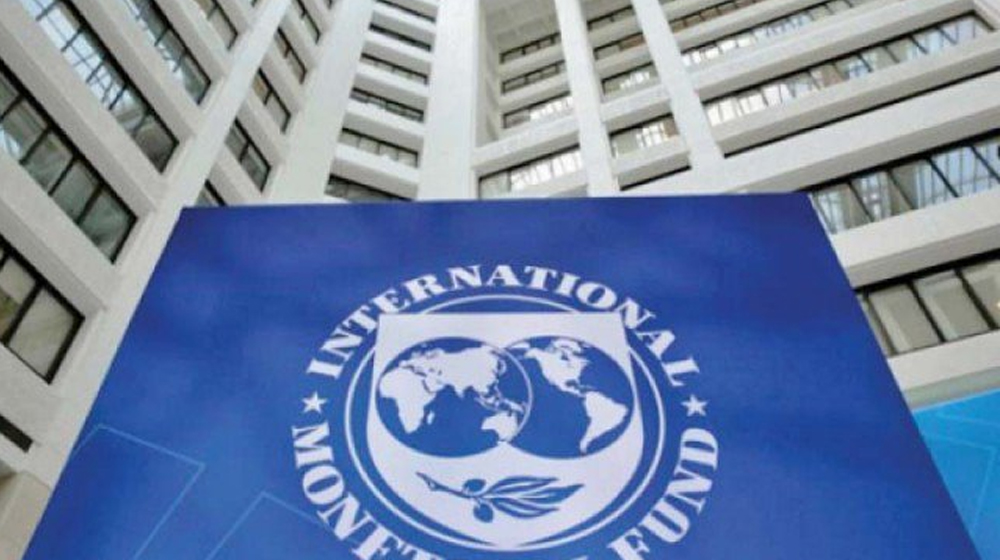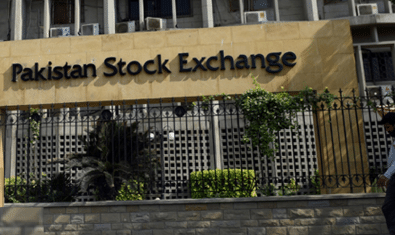The International Monetary Fund (IMF) has asked Pakistan to maintain the momentum on the reform of personal income taxation and harmonization of general sales taxes, suggesting that the country will need to increase income tax rates for the salaried class and implement a single sales tax rate across the four provinces.
The IMF, in its press statement after the board meeting, also noted that strong efforts to advance electricity sector reform are needed to restore the sector’s financial viability and address adverse spillovers on the budget, financial sector, and real economy. The Fund has warned that the Pakistani economy has continued to recover despite the challenges from the COVID-19 pandemic, but imbalances have widened, and risks remain elevated.
The Executive Board of the International Monetary Fund (IMF) concluded the 2021 Article IV Consultation with Pakistan. The Executive Board also completed the sixth review under the Extended Fund Facility (EFF) for Pakistan, allowing the authorities to draw the equivalent of SDR 750 million (about $1 billion). This brings total purchases for budget support under the program to SDR 2,144 million (about $3 billion, or 106 percent of quota).
The EFF was approved by the Executive Board on 3 July 2019 for SDR 4,268 million (about $6 billion at the time of approval, or 210 percent of quota). The program aims to support Pakistan’s policies to help the economic recovery from the COVID-19 pandemic, ensure macroeconomic and debt sustainability, and advance structural reforms to lay the foundations for strong, job-rich, and long-lasting growth that benefits all Pakistanis.
| Pakistan: Selected Economic Indicators, 2018/19–2021/22 1/ | ||||
| Population: 212.5 million (2020/21) | Per capita GDP: US$1,394.1 (2020/21) | |||
| Quota: SDR 2,031 million | Poverty rate: 21.9 percent (natl. line; 2018/19) | |||
| Main exports: Textiles (US$15.4 billion, 2020/21) | ||||
| Key export markets: European Union, United States, United Arab Emirates | ||||
| 2018/19 | 2019/20 | 2020/21 | 2021/22 | |
| Est. | Proj. | |||
| Output | ||||
| Real GDP at factor cost (% change) | 2.1 | -0.5 | 3.9 | 4.0 |
| Prices | ||||
| Consumer prices, period average (%) | 6.7 | 10.7 | 8.9 | 9.4 |
| Consumer prices, end of period (%) | 8.0 | 8.6 | 9.7 | 10.2 |
| General government finances | ||||
| Revenue and grants (% GDP) | 13.0 | 15.2 | 14.5 | 15.9 |
| Expenditure (% GDP) | 21.9 | 23.2 | 21.6 | 22.8 |
| Budget balance, including grants (% GDP) | -9.0 | -8.0 | -7.1 | -6.9 |
| Budget balance, excluding grants (% GDP) | -9.0 | -8.1 | -7.1 | -6.9 |
| Primary balance, excluding grants (% GDP) | -3.6 | -1.8 | -1.4 | -1.3 |
| Underlying primary balance (excluding grants) 2/ | -3.6 | -1.8 | -0.6 | 0.0 |
| Total general government debt excl. IMF obligations | 82.9 | 84.5 | 81.1 | 78.9 |
| External general government debt | 28.5 | 28.4 | 26.1 | 27.0 |
| Domestic general government debt | 54.4 | 56.0 | 55.1 | 51.9 |
| General government debt incl. IMF obligations (% GDP) | 85.3 | 87.6 | 83.6 | 82.0 |
| General government and government-guaranteed debt (incl. IMF; % GDP) | 90.5 | 93.2 | 88.6 | 86.7 |
| Monetary and credit | ||||
| Broad money (% change) | 11.3 | 17.5 | 16.2 | 15.8 |
| Private credit (% change) | 11.9 | 3.0 | 11.5 | 16.0 |
| Six-month Treasury bill rate (%) 3/ | 10.2 | 11.9 | 7.3 | … |
| Balance of Payments | ||||
| Current account balance (% GDP) | -4.9 | -1.7 | -0.6 | -4.0 |
| Foreign Direct Investment (% GDP) | 0.5 | 1.0 | 0.6 | 0.8 |
| Gross reserves (in millions of U.S. dollars) 4/ | 7,274 | 12,175 | 17,297 | 21,211 |
| In months of next year’s imports of goods and services | 1.7 | 2.4 | 2.7 | 3.2 |
| Total external debt (% GDP) | 37.4 | 41.6 | 39.1 | 40.6 |
| Exchange rate | ||||
| Real effective exchange rate (% change) | -15.1 | 3.4 | 7.3 | … |
Pakistan entered the COVID-19 pandemic with strengthened buffers, following the approved EFF program. A strong economic recovery has gained hold since summer 2020, benefiting from the authorities’ multifaceted policy response to the unprecedented shock.
At the same time, external pressures also started to emerge in 2021, including a widening current account deficit and depreciation pressures on the exchange rate, which also reinforced domestic price pressures. The recent policy adjustment was appropriate to address these challenges and maintain economic stability.
The economy is set to continue recovering in FY2022, with real GDP growth projected at 4 percent, while inflation is expected to pick up this year before gradually slowing down. Continued commitment to a market-determined exchange rate and a prudent macroeconomic policy mix will help reduce the current account deficit and ease external pressures over the medium term.
However, Pakistan remains vulnerable to possible flare-ups of the pandemic, tighter international financial conditions, a rise in geopolitical tensions, as well as delayed implementation of structural reforms. Strengthening the medium-term outlook hinges on ambitious efforts to remove structural impediments and facilitate the structural transformation of the economy. To this end, increased focus is needed on measures to strengthen economic productivity, investment, and private sector development, as well as to address the challenges posed by climate change.
The Executive Board also approved the authorities’ request for waivers of applicability and non-observance of performance criteria. Following the Executive Board’s discussion on Pakistan, Deputy Managing Director and Acting Chair, Antoinette Sayeh, issued the following statement:
“The Pakistani economy has continued to recover despite the challenges from the COVID-19 pandemic, but imbalances have widened, and risks remain elevated. The authorities’ recent policy efforts to strengthen economic resilience are welcomed. Timely and consistent implementation of policies and reforms remain essential to lay the ground for stronger and more sustainable growth.
“The authorities have taken important measures to strengthen fiscal policy and put public finances on a sounder footing. Along with careful spending management, revenue mobilization will help to create space for much-needed spending on infrastructure and social protection, while improving debt sustainability. Maintaining the momentum on the reform of personal income taxation and harmonization of general sales taxes is essential. Broader reforms in tax administration and public financial and debt management are expected to further improve the fiscal framework.
“The adoption of amendments to the central bank Act is a welcome step toward strengthening its independence to pursue its mandates of price and financial stability. The recent monetary policy tightening was necessary and continued proactive, data-driven monetary policy would help to anchor inflation. Closer oversight of financial institutions to ensure they remain well-capitalized would help to maintain financial stability. Preserving a market-determined exchange rate is crucial to absorb external shocks, maintain competitiveness, and rebuild reserves. The authorities are committed to removing the existing exchange restrictions and multiple currency practices when BOP conditions stabilize.
“Strong efforts to advance electricity sector reform are needed to restore the sector’s financial viability and address adverse spillovers on the budget, financial sector, and real economy. The IFI-supported Circular Debt Management Plan (CDMP) will help to guide the planned management improvements, cost reductions, alignment of tariffs with cost recovery levels, and better targeting of subsidies to the most vulnerable.
“Ambitious steps to remove structural impediments and facilitate structural transformation remain essential to boost growth and job creation and improve social outcomes. The authorities are focused on state-owned enterprises reform, fostering the business environment and reducing corruption, promoting financial inclusion; and addressing the challenges posed by climate change.”





















